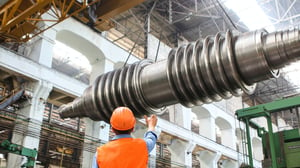An Embodied Carbon Assessment is a method used to quantify the carbon emissions associated with the initial stages of a lifecycle of a product or building, from extraction and processing of raw materials, transportation, and manufacturing, yielding the total carbon footprint from “cradle-to-factory gate”. This assessment helps businesses understand and reduce the environmental impact of their products or constructions. Here are several benefits of an embodied carbon assessment for businesses:
- Environmental Responsibility: Demonstrating a commitment to environmental responsibility can enhance a company's reputation and brand image. Consumers are increasingly conscious of the environmental impact of products and services and may prefer businesses that prioritise sustainability.
- Regulatory Compliance: Many governments and regions have enacted regulations related to carbon emissions and environmental impact. Conducting embodied carbon assessments can help businesses ensure compliance with these regulations and avoid potential legal and financial penalties.
- Cost Reduction: Identifying and quantifying carbon emissions in the supply chain and production process can uncover opportunities to reduce energy consumption, waste, and resource use. This can result in cost savings through improved efficiency.
- Risk Mitigation: Businesses face growing risks related to climate change, such as supply chain disruptions, increased costs, and reputational damage. Embodied carbon assessments can help identify and mitigate these risks by addressing vulnerabilities in the supply chain and production processes.
- Competitive Advantage: Businesses that reduce their carbon footprint and promote environmentally friendly practices can gain a competitive edge. This can lead to increased market share, higher sales, and improved access to environmentally conscious consumers and partners.
- Product Innovation: Embodied carbon assessments can highlight areas where product design and manufacturing processes can be improved. This can lead to product innovation and the development of more sustainable and efficient offerings.
-
Investor and Stakeholder Relations: Investors and stakeholders are increasingly interested in companies that prioritise sustainability and environmental stewardship. Transparent embodied carbon assessments can help attract responsible investors and improve relationships with stakeholders.
-
Employee Engagement: Demonstrating a commitment to sustainability can boost employee morale and engagement. Employees may feel more motivated and prouder to work for a company that prioritises environmental responsibility.
-
Long-Term Viability: As the world shifts toward a low-carbon and sustainable future, businesses that ignore their carbon footprint risk becoming obsolete. Conducting Embodied Carbon Assessments and taking action to reduce emissions can contribute to a company's long-term viability.
In summary, conducting Embodied Carbon Assessments can help businesses make informed decisions that lead to environmental sustainability, cost savings, and competitive advantages. It also positions companies to thrive in a future where environmental concerns and regulations are likely to become even more significant.
JOIN THE JOURNEY TO A MORE SUSTAINABLE FUTURE
Sign up for the latest news, industry insights, white papers launches, webinars and much more.



